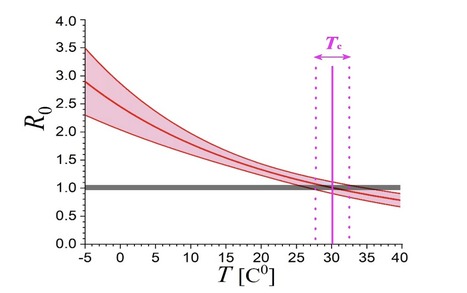 Your new post is loading...

|
Scooped by
Juan Lama
|
In this journal E. Orviz and colleagues recently described the clinical presentation of the first monkeypox patients in Spain, highlighting the frequent co-presence of sexually transmitted infections (STI). To date, no reports of co-infection with monkeypox virus and SARS-CoV-2 have been published. Therefore, in this study we present the clinical features and diagnostic procedure of the first documented case of co-infection with monkeypox virus, SARS-CoV-2 and HIV-1. Since January 2022, more than 16,000 people in over 74 countries have been affected by monkeypox, prompting the World Health Organization to declare this outbreak a public health emergency of international concern. Human-to-human transmission occurs through close contact with infectious material from skin lesions, fomites, seminal fluids and oropharyngeal secretions. The majority of cases were registered in gay or bisexual men often suffering from other STI. At the same time, SARS-CoV-2 is still a major cause of morbidity and mortality globally. COVID-19 shares with monkeypox both the transmission by air droplets and the symptoms of fever, lymphadenopathy, headache, sore throat and fatigue. As these pathogens continue to spread, individuals can be simultaneously infected with monkeypox virus, SARS-CoV-2 and STI, making it difficult for physicians to perform the correct diagnosis, also considering that not all patients with monkeypox develop skin lesions. Our patient, an Italian 36-year-old male spent 5 days in Spain from 16 to 20 June 2022 (Figure 1). Nine days after, he developed fever (up to 39°C), accompanied by sore throat, fatigue, headache and right inguinal lymphadenomegaly. On 2 July he resulted positive for SARS-CoV-2. On the afternoon of the same day a rash started to develop on his left arm. The following day small, painful vesicles surrounded by an erythematous halo appeared on the torso, lower limbs, face and glutes. On 5 July, due to a progressive and uninterrupted spread of vesicles that began to evolve into umbilicated pustules, he went to the emergency department of the Policlinico “G. Rodolico - San Marco” University Hospital in Catania, Italy, and was subsequently transferred to the Infectious Diseases unit. On admission, the patient reported being treated for syphilis in 2019. In September 2021, he performed an HIV test with a negative result. He suffered from bipolar disorder, for which he regularly took carbamazepine 200 mg daily. He was vaccinated for SARS-CoV-2 with two doses of Pfizer's BNT162b2 mRNA vaccine (the last in December 2021) and had already contracted COVID-19 in January 2022. He also reported of having condomless intercourse with men during his stay in Spain. Fever (37.5°C), pharyngodynia, fatigue, headache was still present. On physical examination his body was dotted, including the palm of the right hand and the perianal region, with skin lesions in various stages of progression, ranging from small vesicles (Figure 1, Panel A) to reddened haloed pustules (Figure 1, Panel B and Panel C) and umbilicated plaques (Figure 1, Panel D). The oral mucosa was normal, except for bilateral tonsillar hypertrophy. A modest hepatosplenomegaly and an enlarged (2 cm), hypomobile and painful lymph node in the right inguinal region were found. Laboratory test showed elevated C-reactive protein (69 mg/L, normal values 0.0 - 5.0 mg/L), fibrinogen (713 mg/dL, normal values 170 - 400 mg/dL) and prothrombin time (1.21, normal values 0.8 - 1.2). Chest X-ray revealed a parenchymal hypodiaphany in the right parailary region... Published in Journal of Infection (August 19, 2022):

|
Scooped by
Juan Lama
|
We perform a statistical analysis for understanding the effect of the environmental temperature on the exponential growth rate of the cases infected by COVID-19 for US and Italian regions. In particular, we analyze the datasets of regional infected cases, derive the growth rates for regions characterized by readable exponential growth phase in their evolution spread curve and plot them against the environmental temperatures averaged within the same regions, derive the relationship between temperature and growth rate, and evaluate its statistical confidence. The results clearly support the first reported statistically significant relationship of negative correlation between the average environmental temperature and exponential growth rates of the infected cases. The critical temperature, which eliminates the exponential growth, and thus the COVID-19 spread in US regions, is estimated to be Tc = 86.1 ± 4.3 °F. (30.1°C). It is straightforward to ask when the environmental temperature will climb above this critical value. As an example, Figure 10 plots the daily average temperatures in San Antonio, Texas, shown that will be clearly above the estimated TC threshold in the second half of May. The plot suggests a possible date for loosening the strict measures in San Antonio, that is, May 24. The resulted high statistical confidence of the negative correlation of the environmental temperature on the exponential growth rate of the cases infected by COVID-19 is certainly encouraging for loosening super-strict social-distancing measures, at least, during the summery high temperatures. However, we are, by no-means, recommending a return-to-work date based only on this study. But we do think that this should be part of the decision, as well as an inspiration for repeating the same analysis in other heavily infected regions.

|
Scooped by
Juan Lama
|
On February 20, 2020, a young man in the Lombardy region of Italy was admitted with an atypical pneumonia that later proved to be COVID-19. In the next 24 hours there were 36 more cases, none of whom had contact with the first patient or with anyone known to have COVID-19.This was the beginning of one of the largest and most serious clusters of COVID-19 in the world. Despite aggressive containment efforts, the disease continues to spread and the number of affected patients is rising. The case-fatality rate has been very high and is dominated by very old patients. This Infographic shows the most recent statistics emerging from Italy regarding the country’s experience with COVID-19.
|

|
Scooped by
Juan Lama
|
A year after the virus began spreading in Europe, things feel unnervingly the same. A year after Italy became the first European country to impose a national lockdown to contain the spread of the coronavirus, the nation has fallen eerily quiet once again, with new restrictions imposed on Monday in an effort to stop a third wave of infections that is threatening to wash over Europe and overwhelm its halting mass inoculation program. As he explained the measures on Friday, Prime Minister Mario Draghi warned that Italy was facing a “new wave of contagion,” driven by more infectious variants of the coronavirus. Just as before, Italy was not alone. “We have clear signs: The third wave in Germany has already begun,” Lothar Wieler, head of the Robert Koch Institute for Infectious Diseases, said during a news conference on Friday. Prime Minister Viktor Orban of Hungary predicted that this week would be the most difficult since the start of the pandemic in terms of allocating hospital beds and breathing machines, as well as mobilizing nurses and doctors. Hospitalizations in France are at their highest levels since November, prompting the authorities to consider a third national lockdown. Officials in the United States are watching those developments with wary eyes. At a White House news briefing on Monday, Dr. Rochelle Walensky, director of the Centers for Disease Control and Prevention, pleaded with Americans not to let their guard down as case numbers have dropped from their peak. She pointed to images of young people crowded onto Florida beaches, though generally people are safer outside than inside, and to European nations as a warning. “Each of these countries has had nadirs like we are having now, and each took an upward trend after they disregarded no mitigation strategies,” she said. “They simply took their eye off the ball. I’m pleading with you for the sake of our nation’s health. These should be warning signs for all of us.” The U.S. death rate remains at nearly 1,400 people every day. That number still exceeds the summer peak, when patients filled Sun Belt hospitals and outbreaks in states that reopened early drove record numbers of cases, though daily deaths nationwide remained lower than the first surge last spring. The average number of new reported cases per day remains comparable to the figures reported in mid-October. Across Europe, cases are spiking. Supply shortages and vaccine skepticism, as well as bureaucracy and logistical obstacles, have slowed the pace of inoculations. Governments are putting exhausted populations under lockdown. Street protests are turning violent. A year after the virus began spreading in Europe, things feel unnervingly the same. In Rome, the empty streets, closed schools, shuttered restaurants and canceled Easter holidays came as a relief to some residents after months of climbing infections, choked hospitals and deaths. “It’s a liberation to return to lockdown, because for months, after everything that happened, people of every age were going out acting like there was no problem,” said Annarita Santini, 57, as she rode her bike in front of the Trevi Fountain, a popular site that had no visitors except for three police officers. “At least like this,” she added, “the air can be cleared and people will be scared again.” For months, Italy had relied on a color-coded system of restrictions that, unlike the blanket lockdown of last year, sought to surgically smother emerging outbreaks in order to keep much of the country open and running. It does not seem to have worked. “History repeats itself,” Massimo Galli, one of Italy’s top virologists, told the daily Corriere della Sera on Monday. “The third wave started, and the variants are running.” “Unfortunately we all got the illusion that the arrival of the vaccines would reduce the necessity of more drastic closures,” he said. “But the vaccines did not arrive in sufficient quantities.”

|
Scooped by
Juan Lama
|
According to researchers, authorities were able to prevent new infections with tough quarantine measures and strict testing on residents, whether they displayed symptoms or not. Vò, a small town in northern Italy, could offer clues on to how to deal with the coronavirus after health authorities appear to have stopped the spread of COVID-19, preventing any new infections. Italy's first death from COVID-19 was recorded in the northern town of Vò, a 3,300-strong community in the Province of Padua 30 miles (50 kilometers) from Venice. Scientists involved say it was an experimental initiative that enabled them to create a full "epidemiological picture" of COVID-19, Financial Times reports. Since the start of the outbreak, authorities have been testing and retesting each of the town's inhabitants. The tests were performed on people whether or not they were displaying symptoms of the disease. By some reports, between a half and three-quarters of carriers in Vò, were asymptomatic. Anyone who was found to be infected with the new coronavirus was then put into quarantine—as was everyone they had come into contact with. Testing began in late February when roughly 3 percent of Vò residents were infected with the virus that causes COVID-19. Half were asymptomatic—therefore displayed no symptoms like fever, cough and shortness of breath typical of the disease. A second round of testing days later revealed the infection rate had fallen to 0.3 percent. "On the second testing that was carried out, we recorded a 90 percent drop in the rate of positive cases. And of all the ones who were positive in the second testing, eight people were asymptomatic," said Professor Andrea Crisanti, an infections expert at Imperial College London on sabbatical at the University of Padua in Italy, Sky reports. The success of the policy suggests aggressive testing combined with thorough quarantine of anyone who may be infected may help curb the outbreak in other places. By testing everyone and not just those who showed symptoms, local authorities were able to quarantine asymptomatic carriers—something that could not be achieved with more typical testing methods used to confirm COVID-19 in people already showing signs of the illness.
|




 Your new post is loading...
Your new post is loading...










